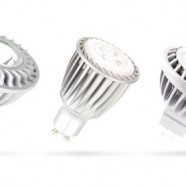Understanding How Smart LED Solutions Work
Do you often forget to switch the lights off? Between the growing popularity of greener technology and the plain intelligence of using less expensive resources, smart LED solutions are fast becoming the best choice for new installations as well as business retrofits for all types of lighting. Much more than just plain LED retrofits, smart LED solutions are a complete system designed to manage lighting in your building, giving you the optimum in visibility along with the lowest possible energy costs. Smart LED lights are made up of a tripod of newer technologies, each of which relies on the other two to create the optimum method of energy usage.
Smart LED Lights
The main leg of the smart solutions tripod is the LED light bulbs themselves. LED retrofits themselves can save you extraordinary amounts of money on your energy bill. In general, they use 80 percent less energy than traditional light bulbs and, unlike short-life incandescents, LED bulbs last 25,000 to 50,000 hours. This means double savings, as you won’t have to replace your bulbs every couple of months like in a traditional lighting situation. Add to that the lack of frustration you’ll feel by knowing your bulbs won’t burn out exactly when you need them the most, and smart LED lights look more intelligent all the time.
Occupancy Sensors
Human beings are forgetful, and more energy is wasted through forgetting to turn off the lights than just about any other cause. Occupancy sensors seek to solve this problem by noticing when people are in a room and when they’ve left. Motion sensors are the most common method of telling when a person is in a room, and smart systems make use of them in almost every model. This doesn’t cover every situation, though, since people tend to sit still when watching television, reading books, or doing crafts and hobbies. To make up for this shortcoming in the motion sensors, advanced smart systems also include heat sensors to test when a live human body is in the vicinity. They can be set for different size beings so your cat doesn’t set off your lights all night long, but they still won’t turn off your reading light just as you’re getting to the most exciting part of your book. Knowing your smart LED lights will always be on, except when you don’t need them any more, is a touch of the future that can save you money today.
Daylighting Controls
Turning lights on and off depending on whether people are in the room is a great way to save money, but there are still times of the day when it makes no sense to turn on the lights at all. In the middle of the day in a room with plenty of windows, there’s no need to any type of lights to burn. On the other hand, in a room with one small window that faces east, evening might be a good time to start turning on some of the lamps. Daylighting controls have sensors that detect the amount of light already naturally in a room, then decides how much more artificial light is needed for normal human activities. Often attached to dimmers, this crucial part of a smart LED lighting system gradually adds light throughout the day as the room gets dimmer, and turns the lights off when the sun shines through the window.
Savings
While the savings found from using smart LED lights is significant, having a licensed, professional electrician install a smart LED solutions package in your home or business has the power to save almost 90 percent of the total energy usage formally found every month. Not only is this good business, as it saves a significant amount of money, it’s good for the environment because of the much smaller carbon footprint your building will leave.
Read More8 Benefits of LED Retrofit Lighting
If you’re comparing the costs of retrofitting LED lights to replace your traditional bulbs, the initial cost might be a reason to make you think twice. It’s true, LED, or Light Emitting Diode, lights do cost more in their first installation, but after they’re in they are virtually maintenance free for many years. Besides the benefits of paying a fraction of the cost of your old power bill, you’ll find many more benefits to changing your lighting from incandescent or fluorescent to LED.
Benefit #1: Lower Energy Costs
It can’t be denied that the much smaller energy usage in LED retrofit lighting compared to traditional bulbs makes a powerful argument for LED retrofits in your building. Studies have shown that, in normal daily use, LED lights use a small fraction of the power that traditional bulbs do.
Benefit #2: Long Life
On average, LED bulbs are rated to last 100,000 hours. This means that you can light a building for eight hours each day and you won’t have to replace the bulb for about 20 years. Even if you leave the lights on 24 hours a day, it would take over 11 years for the LED bulb to be exhausted. In addition, these bulbs don’t burn out, leaving you suddenly in the dark. LEDs simply get dimmer and dimmer at the end of their lives, giving you ample warning when it’s finally time to change them.
Benefit #3: Low Voltage
Replacement LED lamps use so little voltage that it’s possible to illuminate the outside of your entire building using the power of a few solar energy panels. This makes them extremely useful for remote areas, plus they’re reliable even in a power outage.
Benefit #4: Greener Light
LED lights contain absolutely no dangerous materials and are 100 percent recyclable. Unlike fluorescent bulbs, which can contain mercury and other dangerous chemicals, LEDs are completely safe and inert.
Benefit #5: Frequent Switching and Instant On
Unlike fluorescent bulbs, which can take half a minute or more to warm up and reach full lighting strength, LED lights are instantly bright the second you turn on the switch.
In addition, you can switch LED lights on and off as frequently and rapidly as you like. This behavior severely affects the life of traditional light bulbs, but it has no effect on LED retrofits.
Benefit #6: Work Well in Extremely Cold Weather
In areas where the outdoor temperature frequently drops below freezing, or in commercial buildings that have cold areas such as freezers, traditional bulbs can pose a challenge: less efficient operation and a shorter lifespan. LED lights work exactly the same whether the environment is 72 degrees or below zero on a daily basis.
Benefit #7: No UV Emissions
For interiors that have light-sensitive furnishings such as antiques in museums, paintings in art galleries, and fabric in historic quilt collections, LED retrofits are much safer to use than traditional bulbs. These lights give off almost no infrared light and virtually no UV emissions, making them the safest lighting choice for your most delicate property.
Benefit #8: Durable and Long-Lasting
LED lights are made of damage resistant materials, and can withstand wind, water, jostling, dropping, and even purposeful vandalism. This makes them ideal for construction sites, outdoor public areas, commercial buildings, and anywhere outdoors that’s frequently subject to severe weather.
Read More


Recent Comments